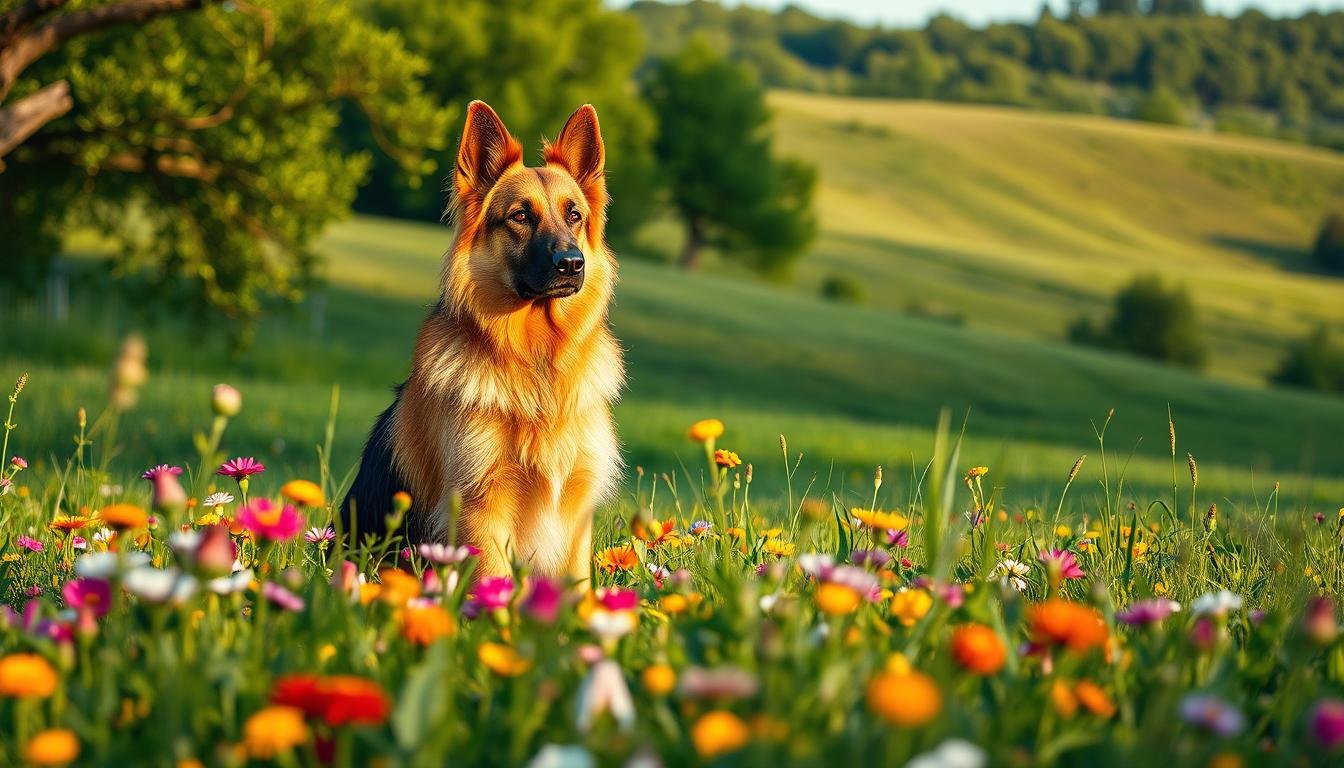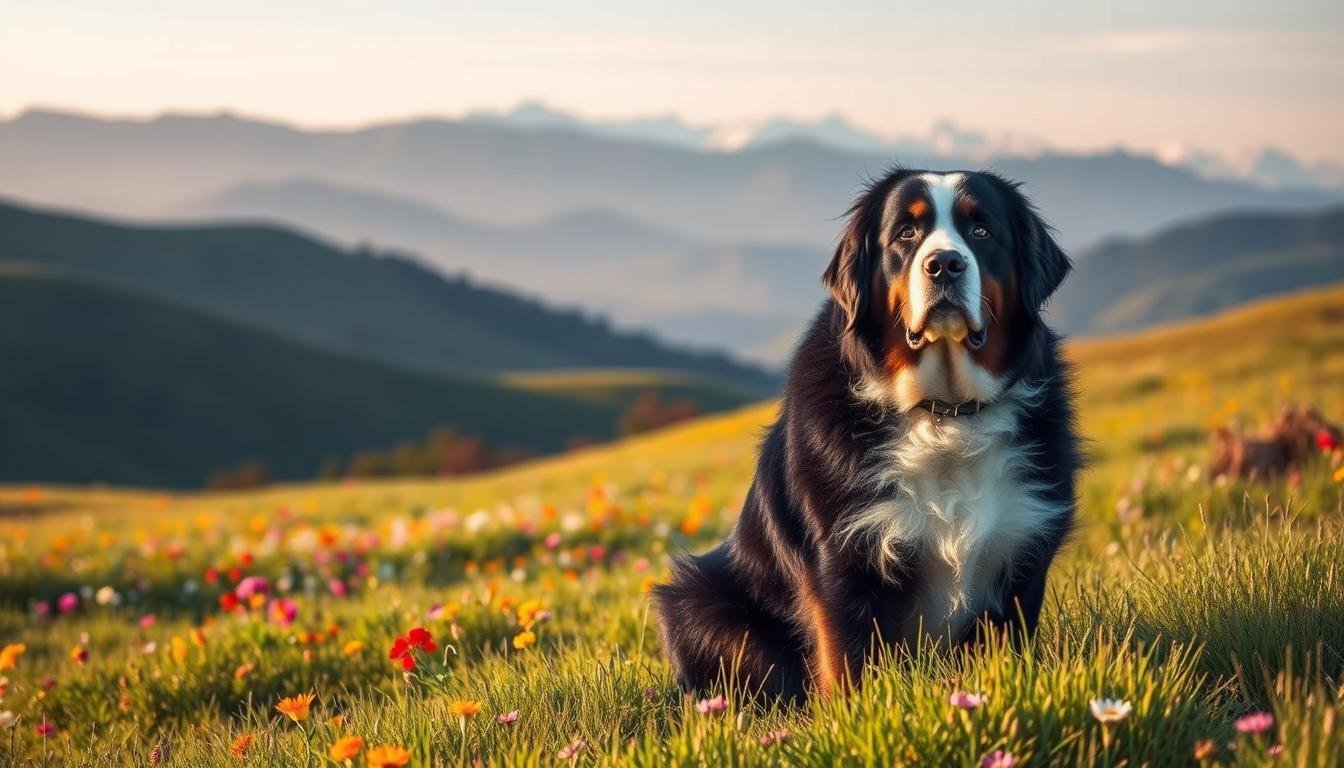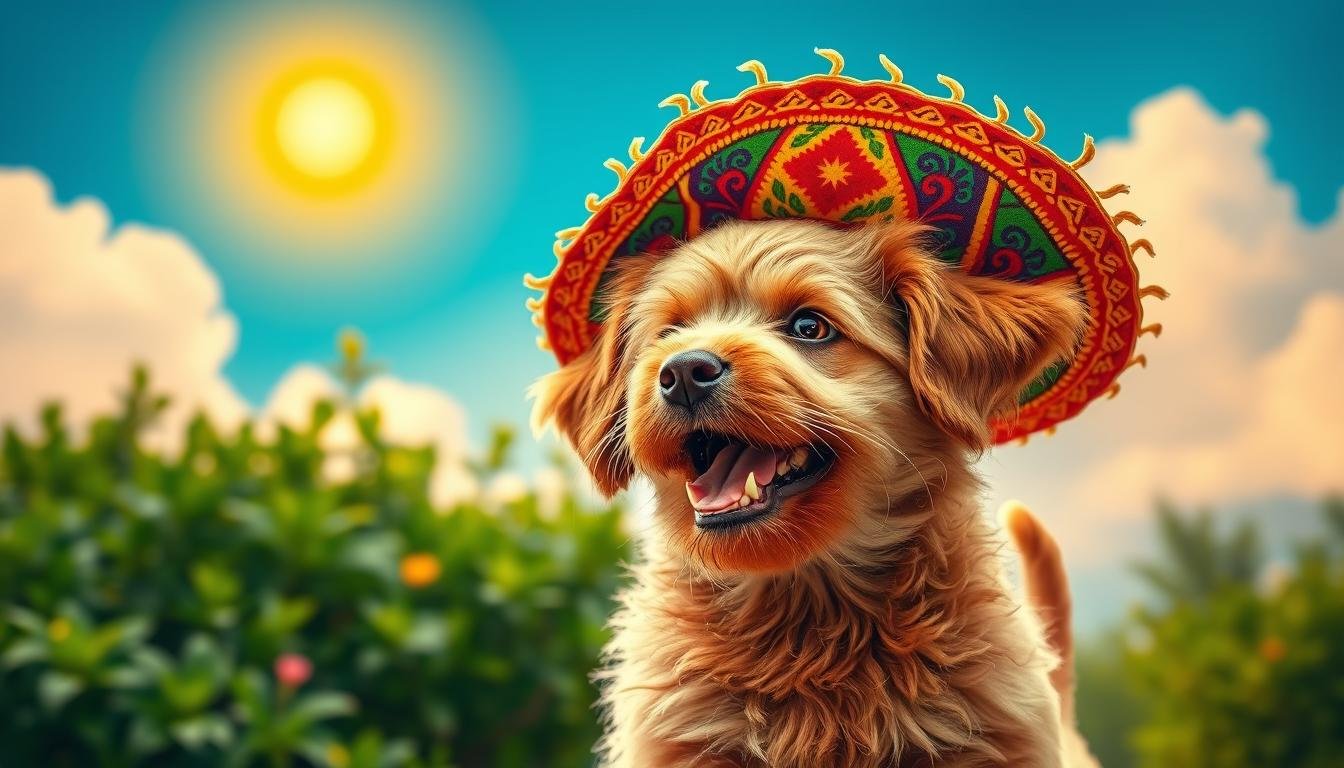Choosing a furry companion is like picking a new family member—except this one might shed on your couch and eat your shoes. When it comes to large breeds, the decision feels even bigger (literally). We’ve all been there: scrolling through endless photos of adorable pups, wondering if your living room can handle a gentle giant who thinks they’re a lap dog.
Let’s face it—Switzerland’s greatest exports aren’t just chocolate and watches. Their four-legged legends have shaped history, from snowy mountain rescues to farmstead teamwork. Both breeds carry a legacy of loyalty, but their personalities and needs? That’s where things get interesting.
We’re unpacking what makes these fluffy titans unique. Think of it as a “big dog basics” crash course. Your future companion might prefer hauling carts over cuddling, or vice versa—and your lifestyle will decide which furry force of nature fits best.
Key Takeaways
- Swiss heritage shapes both breeds’ work ethics, but their historical roles differ dramatically
- Temperament ranges from “professional snuggler” to “duty-driven guardian”
- Grooming and exercise needs vary as much as their iconic coat patterns
- Family compatibility depends on space, activity levels, and tolerance for drool
- Size matters—both require serious commitment to training and healthcare
Introduction: Meeting the Gentle Giants
Imagine a creature that thinks your lap is a throne, even if they’re the size of a coffee table. These Swiss-born legends redefine what it means to be a family companion—majestic enough to star in alpine postcards, yet goofy enough to steal pizza off your kitchen counter.
We’re talking about breeds that combine the charm of a Disney sidekick with the dimensions of a beanbag chair. Their idea of personal space? Non-existent. Your couch becomes their kingdom, and your heart becomes their chew toy (metaphorically speaking).
| Trait | Alpine Adventurer | Farmyard Favorite |
|---|---|---|
| Weight Range | 120-180 lbs | 70-115 lbs |
| Energy Level | Moderate | High |
| Signature Move | Rescue instinct | Cart-pulling skills |
Both breeds share a “work hard, snuggle harder” philosophy. One evolved to find stranded travelers in snowdrifts, the other to herd livestock. Today? They’re more likely to “rescue” your socks from the laundry basket or “herd” toddlers toward snack time.
Prospective owners should know: these pets don’t just enter your home—they stage a friendly takeover. You’ll gain a shadow that doubles as a space heater and loses every game of hide-and-seek. But watching a 150-pound floof attempt stealth mode? Worth every sacrificed couch cushion.
Origins and Background: Swiss Alps Heritage
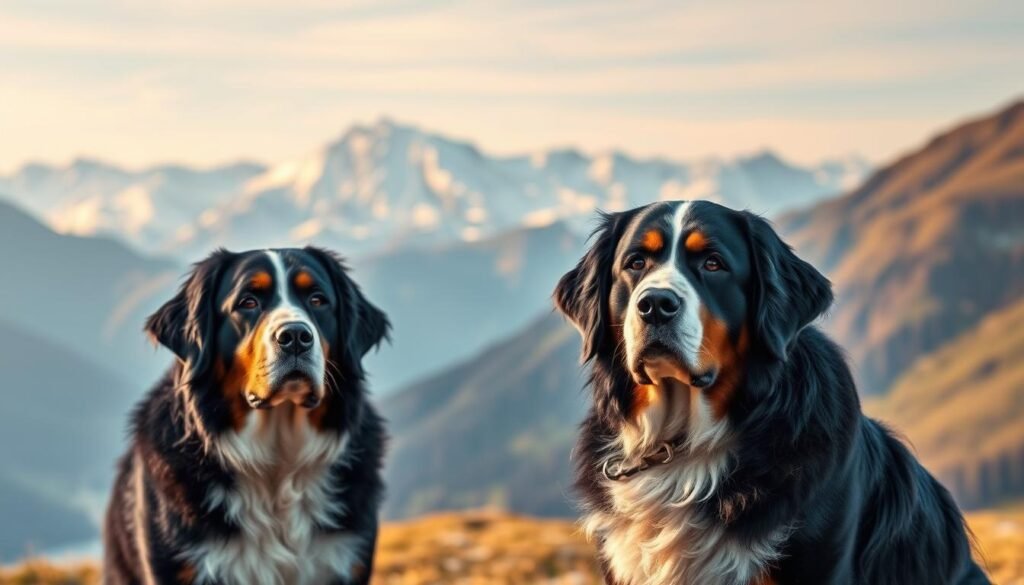
Switzerland’s peaks forged two canine legends with wildly different resumes. While both breeds earned their stripes in harsh alpine conditions, their job applications read like adventure novels set in opposite genres.
St. Bernard Rescue History
Monks at the St. Bernard Pass played matchmaker for these snow warriors. Their mission? Create four-legged search parties that could sniff out hypothermic travelers under 15-foot drifts. Talk about specialized dating criteria.
These canine saviors developed frost-resistant fur and a sixth sense for danger. Legend claims they carried brandy barrels to revive victims – though historians say that’s mostly Hollywood magic. The truth? Their warm tongues and body heat did the real rescuing.
Bernese Mountain Dog Farm Origins
While their cousins scaled icy cliffs, these tri-colored workers ruled lower elevations. Farmers needed a multipurpose helper who could haul milk carts by dawn and guard chickens by dusk. The result? A breed that’s basically a tractor with a wagging tail.
Their strength made them indispensable for moving goods between villages. Yet they kept their gentle nature – no easy feat when your day job involves herding stubborn cows down rocky paths.
| Work Environment | Primary Duties | Signature Trait |
|---|---|---|
| Snowy mountain passes | Search & rescue operations | Cold-resistant double coat |
| Alpine farmsteads | Cargo transport & herding | Powerful hindquarters |
Both breeds share DNA with Roman mastiffs, but centuries of specialized work rewired their instincts. Today’s pups might trade snowshoes for squeaky toys, but that drive to serve? Still coded into every wag and woof.
Physical Characteristics and Size Comparisons
Ever tried parking a compact car in a motorcycle spot? That’s what living with these gentle giants feels like. Their size isn’t just noticeable—it’s a lifestyle adjustment waiting to happen.
Size, Build, and Weight Differences
One breed could moonlight as a sofa, the other as a loveseat. The larger variety reaches weights that rival adult humans, with sturdy frames built for power. Their compact cousin sports a more athletic build, though “athletic” here means “can still knock over your coffee table with one wag.”
Coat, Grooming, and Appearance
One sports a weatherproof jacket perfect for snowstorms. The other rocks a flowing triple-layer coat that turns every walk into a shampoo commercial. Weekly brushing becomes mandatory—unless you enjoy wearing tumbleweeds of fur as accessories.
Pro tip: Invest in a industrial-strength vacuum. The fluffier coat sheds enough to knit a sweater daily, while the shorter fur specializes in embedding itself into carpets. Either way, your cleaning routine just got promoted to a part-time job.
bernese mountain dog vs saint bernard: Temperament and Behavior
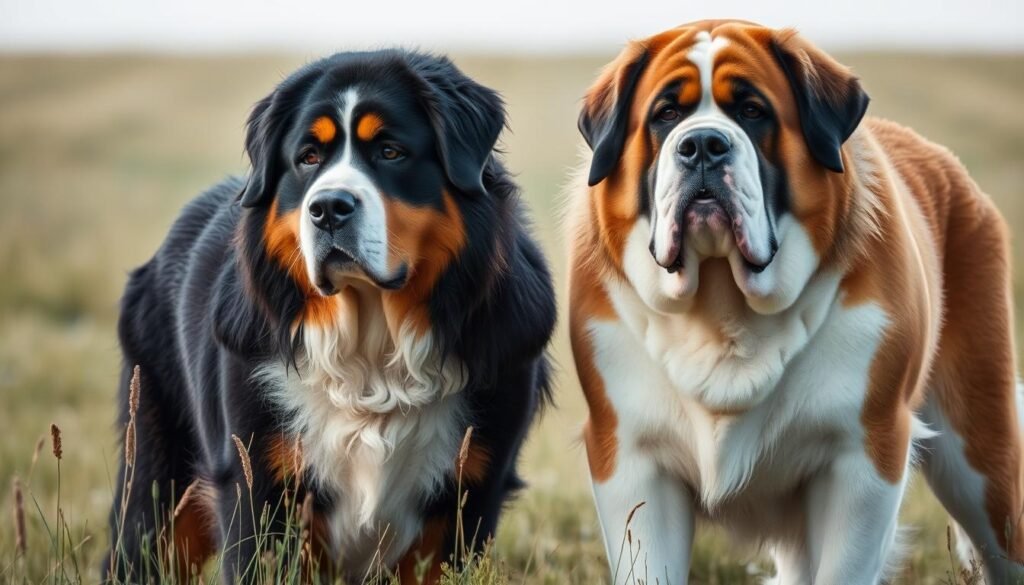
Personality is where these fluffy legends truly diverge—like comparing a zen master to a love-struck poet. Both breeds could teach meditation classes, but their approaches to family life reveal fascinating contrasts.
Distinct Personality Traits
One excels at reading rooms like a canine psychologist. The other operates with monk-like serenity. Historical roles forged their emotional blueprints: rescue missions demand unshakable focus, while farm life rewards social awareness.
Snow rescue specialists developed an almost eerie calm. Picture a 170-pound nanny who’s seen it all—from avalanches to toddler tea parties. Their “this too shall pass” attitude makes them ideal for chaotic homes.
Farm helpers evolved into emotional sponges. They’ll lean against you during sad movies and celebrate pizza nights with full-body wiggles. Their intelligence shines in collaborative tasks, thriving when included in daily activities.
Both adore kids, but supervision matters. A tail swipe can clear coffee tables, and enthusiastic greetings might topple preschoolers. Their gentle nature compensates—they’ll tolerate dress-up sessions and clumsy petting with saintly patience.
Training reveals deeper differences. Independent thinkers respond best to confident leadership, while eager-to-please types crave constant feedback. Neither breed suits rushed owners—their love language involves time and consistency.
Lifestyle Needs: Exercise, Space, and Climate Considerations
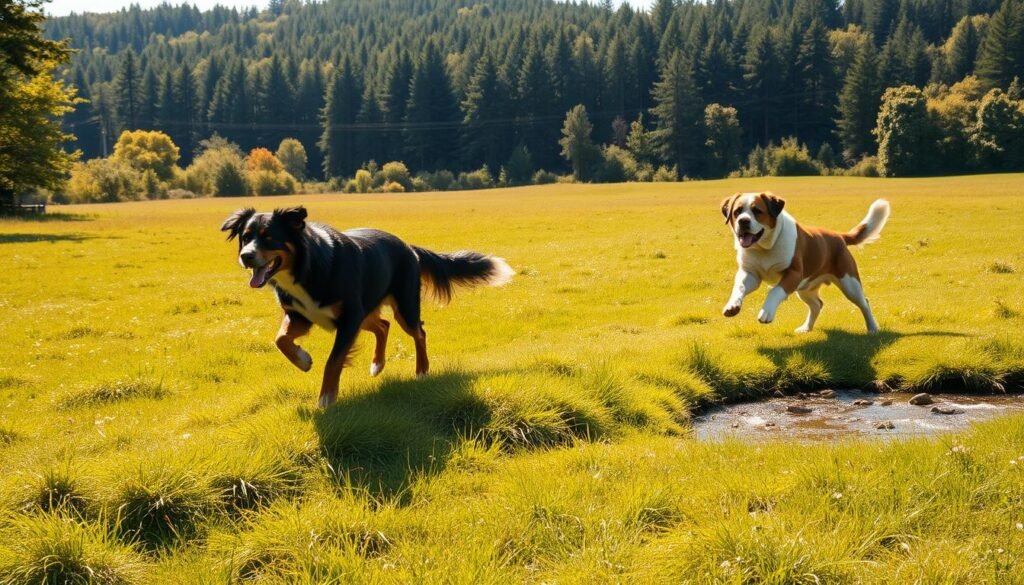
Owning a living rug that moonlights as a workout buddy requires understanding their Goldilocks zone—not too lazy, not too hyper. These breeds redefine “moderate exercise” with a philosophy best described as “we’ll move when we feel like it.” Just don’t mistake their calm demeanor for couch potato status.
Exercise and Activity Levels
The alpine rescuers prefer walks that mimic their historic patrols—steady pacing with frequent sniff breaks. Think less marathon, more leisurely museum tour. Their endurance shines in cooler weather, but they’ll veto any plan involving midday summer hikes.
Farm-born counterparts need consistent activities mimicking their work heritage. Short play sessions spread through the day beat one long workout. Puzzle feeders become gym substitutes when rain cancels backyard time.
Climate Adaptability and Space Requirements
Both breeds treat warm weather like uninvited houseguests. You’ll find them pancaked on AC vents when temperatures rise. Winter transforms them into snowplows with wagging tails, though icy paths require paw protection.
Homes need square footage for the “floof sprawl” phenomenon. Apartments work if you’re okay with a roommate who claims 80% of the sofa. But really, these giants deserve yards for moonlight zoomies and sunbathing marathons.
Pro tip: Install sturdy fencing. Their idea of “exploring” might involve redecorating your flower beds with craters the size of kiddie pools.
Grooming, Health, and Care Essentials

Owning these fluff titans means signing up for a crash course in canine cosmetology. Your vacuum will become your most-used appliance, and lint rollers will multiply in every drawer like tribbles. But behind those soulful eyes lies a biological masterpiece that demands thoughtful upkeep.
Brushing: From Casual to Career
The farm-born companions require daily detangling sessions. Their triple-layer coat acts like Velcro for pine needles and cookie crumbs. Rescue heritage breeds get by with weekly brushing—until spring hits. Then they shed enough fur to stuff a queen-sized comforter in 48 hours flat.
| Maintenance Task | Alpine Guardian | Countryside Helper |
|---|---|---|
| Brushing Frequency | 3x weekly (6x when shedding) | Daily + professional trimming |
| Bath Time | Monthly | Bi-weekly paw washes |
| Tool Kit Essentials | Undercoat rake | Mat splitter + slicker brush |
Wellness Watchlist
Both breeds share joint concerns, but their health risks diverge like mountain trails. The larger variety often faces cardiac challenges, while their colorful cousins battle cellular invaders. Regular screenings become non-negotiable—think of them as canine physicals with belly rub bonuses.
Average lifespan statistics might make your heart ache. But proper care tips the scales toward longevity. Keep treats measured, joints supported, and stress minimized. As experienced owners know, prevention beats treatment when dealing with gentle giants.
Budget for bi-annual vet visits and pet insurance. These aren’t accessories—they’re survival gear for navigating breed-specific issues. Your reward? More years of slobbery kisses and floor-dominating naps.
Suitable Families and Living Conditions
Picture your home transforming into a playground for a furry titan who thinks staircases are jungle gyms. Both breeds demand space, but their needs diverge like city skylines and country horizons. Your living situation isn’t just about square footage—it’s about matching energy to environment.
Living Environments: Urban vs Rural
Alpine-bred companions thrive where thermostats stay low and backyards stretch wide. Their idea of paradise? Snowdrifts to plow through and porches for people-watching. Urban dwellers can make it work with AC cranked to arctic levels and “elevator etiquette” training.
Farm-born counterparts adapt better to tighter spaces if given daily adventures. Think weekend hikes that satisfy their inner cart-puller. But let’s be real: A studio apartment with these fluffballs feels like sharing a sleeping bag with a friendly bear.
Family Compatibility and Activities
Got kids? Both breeds offer built-in family entertainment—live-in babysitters who double as nap partners. One excels at marathon couch snuggles during movie nights. The other brings enthusiasm to backyard obstacle courses, provided you’re okay with redecorated flower beds.
Time-strapped households beware: These pets crave engagement. They’ll happily “help” fold laundry (by sitting on it) or supervise homework (by drooling on math worksheets). The key? Matching their historic purpose to your modern lifestyle—whether that’s neighborhood patrols or farmhouse nostalgia.


